The Blue Empress Diamond
Open FREE Unlimited Store Join Our Newsletter
Lareef A. Samad B.Sc.(Hons)
Origin of Name
The Blue Empress diamond belonging to the Steinmetz Group of Geneva, is a recently discovered diamond unveiled to the world in November 2003, at the Harrods Department Store, in London, attracting international attention, when the diamond set as the centerpiece of an exquisitely crafted pendant, to an 18-carat white gold necklace, was worn by super model Yasmin Le Bon, before being put on display at the fine jewelry department of Harrods. The name of the diamond, "Blue Empress," no doubt emphasizes the rare blue color of the diamond and its exclusive, perfectly symmetrical pear-shape; but the appellation "Empress" seems to signify the exceptional quality of the diamond, which seems to say that the diamond is an "Empress among other blue diamonds."

Super model Yasmin Le Bon wearing the Blue Empress necklace during its unveiling at Harrods in November, 2003
Characteristics of the Diamond
The perfect symmetrical shape is the diamond's most distinguishing feature
The Blue Empress diamond is a perfectly symmetrical pear-shaped, fancy vivid blue diamond, weighing 14 carats. The most distinguishing feature of the diamond is its perfect symmetrical shape.
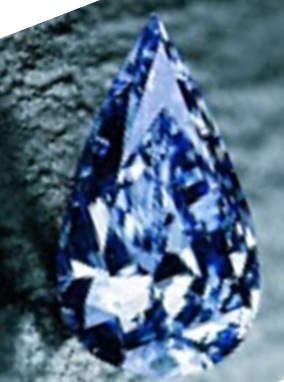
The perfectly symmetrical pear-shaped Blue Empress Diamond - A creation of the renowned master-cutter Matis Vitrol
The position occupied by the diamond in the list of famous blue diamonds arranged in descending order of weights
In the list of known famous blue diamonds in the world, arranged in descending order of weights, given below, the 14-carat Blue Empress diamond occupies the 17th position. In this list except for diamond numbers 4, 5, 8, 9, 19 and 38 that originated in the Golconda mines of India, and diamond number 6 that originated in Guinea, all other blue diamonds originated in the famous Premier mine/Cullinan mine/Petra mine of Transvaal, South Africa, the main source of blue diamonds in the world, in the 20th and 21st-centuries. The eleven exceptionally rare blue diamonds that constituted part of the De Beers Millennium Diamond Collection displayed at the London's Millennium Dome in the year 2000, ranging in size from 5.16 carats to a maximum of 27.64 carats, belonging to the Heart of Eternity, all originated in the Premier Mines of South Africa.
List of known famous blue diamonds in the world arranged in descending order of carat weights
S/N |
Name |
Price realized at Auction/Value when last sold | Country/Period of Origin | Carat weight |
Cut/Shape | Color/Clarity |
| 1 | Unnamed cushion-cut blue diamond | Cut from a 704.56-carat rough diamond Valued between $45-50 mill. | 261.00 | Cushion-cut | fancy blue | |
| 2 | Unnamed brilliant | 51.84 | Round-brilliant | fancy blue | ||
| 3 | Copenhagen Blue diamond | Named in honor of an exhibition in Copenhagen in 1960 | Jagersfontein Mine, South Africaa | 45.85 | Emerald-cut | fancy blue |
| 4 | Hope diamond | Over $300,000 in 1911. Current estimate $200-$250 mill. |
Golconda, India 1663-68 | 45.52 | Antique-cushion brilliant | fancy dark grayish- blue/VS1 |
| 5 | Tereschenko | $4.6 mill. Christie's Genv. sale Nov.1984 | Golconda, India | 42.92 | Pear-shaped | fancy blue |
| 6 | Graff Imperial Blue | Guinea | 39.81 | Pear-shaped | fancy light blue/IF | |
| 7 | Crown of Charlemagne | Last sold by Harry Winston in 1967 | 37.05 | Old-European cut | fancy light blue | |
| 8 | Wittelsbach-Graff | $24.3 mill. | Gloconda, India | 35.56 /31.06 | Cushion-shaped | fancy deep blue/IF |
| 9 | Sultan of Morocco | $250,000 in 1972, Private sale | Golconda,India | 35.27 | Cushion-cut | fancy grayish blue |
| 10 | Cornflower Blue diamond-1 | Sold by Harry Winston in 1969, later re-purchased and sold to a Middle eastern client in 1971. | Premier Mine, S.A. | 31.93 | Pear-shaped | fancy blue |
| 11 | The Blue Heart or Eugenie Blue | $300,000 in 1953. Sale by Van Cleef & Arpels after change of setting | Premier Mine, S.A. | 30.82 | Heart-shaped | fancy vivid blue |
| 12 | Blue Lili | Premier Mine, S.A. | 30.06 | Tapered cushion-cut | fancy intense blue | |
| 13 | The Heart of Eternity | Premier Mine, S.A. | 27.64 | Heart-shaped | fancy vivid blue/VS2 | |
| 14 | Transvaal Blue | Premier Mine, S.A. | 25.00 | Pear-shaped | fancy blue | |
| 15 | Sam Abram Fancy Blue diamond | $9.9 mill. Soth.NY. Oct 1994 | Premier Mine, S.A. | 20.17 | Emerald-cut | fancy vivid blue/VS2 |
| 16 | Graff Blue Ice Diamond | Premier Mine, S.A. | 20.02 | Pear-shaped | fancy deep blue | |
| 17 | The Blue Empress | Premier Mine, S.A. | 14.00 | Pear-shaped | fancy blue | |
| 18 | The Begum Blue | $7.75 mill. Christie's Geneva. November 1994 | Premier Mine, S.A. | 13.78 | Heart-shaped | fancy deep blue |
| 19 | Brunswick Blue-1 Previously believed to have been cut from the French Blue diamond |
Part of the Duke of Brunswick collection of jewels sold in 1874 | Golconda, India | 13.75 | Pear-shaped | fancy blue |
| 20 | Cut-cornered rectangular mixed-cut blue diamond | $8.87million Christie's Geneva, May 2008 |
Premier Mine, S.A. | 13.39 | Cut-cornered rectangular mixed-cut | fancy intense blue |
| 21 | Marquise-cut fancy blue diamond | $7.6 million Christie's Hong Kong, May 2011 | Premier Mine, S.A. | 13.39 | Marquise-cut | fancy blue/VVS2 |
| 22 | Cornflower Blue diamond-2 | Set in a ring and sold by Harry Winston in 1969 | Premier Mine, S.A. | 12.39 | Round brilliant | fancy blue |
| 23 | The Blue Magic | Premier Mine, S.A. | 12.02 | Modified pear-shaped | fancy vivid blue/VVS2 | |
| 24 | Bulgari Blue | $15.7 mill. Christ.NY Oct.2010 | Premier Mine, S.A. | 10.95 | Triangular-shaped | fancy vivid blue |
| 25 | Christie's N.Y. April 2007 | $2..4 million | 9.39 | Cushion-cut | fancy grayish blue | |
| 26 | Sotheby's HK. Oct. 2009 | $5.7 mill.Soth.HK. | Premier Mine, S.A. | 8.74 | Emerald-cut | fancy intense blue/VVS1 |
| 27 | Christie' Geneva, Dec.1999 | $3.2 million | Premier Mine, S.A. | 7.96 | Pear-shaped | fancy vivid blue/VS1 |
| 28 | Soth. Geneva May 2010 | $8.03 mill. | Premier Mine, S.A. | 7.64 | Cushion-cut | fancy intense blue/VVS2 |
| 29 | Christie's Hong Kong. April 2002 | $2.6 mill. | Premier Mine, S.A. | 7.15 | Pear-shaped | fancy vivid blue |
| 30 | Petra Blue/Star of Josephine | $9.5 mill. Soth. Geneva. May 2009 | Premier / Cullinan/Petra Mine.S.A. | 7.03 | Cushion-cut | fancy vivid blue/IF |
| 31 | Brunswick Blue-2 | Part of the Duke of Brunswick collection of jewels sold in 1874 | Premier Mine, S.A, | 6.50 | Pear-shaped | fancy blue |
| 32 | Christie's New York | $3.6 mill | Premier Mine, S.A. | 6.29 | Pear-shaped | fancy intense blue |
| 33 | Graff Blue diamond | Premier Mine, S.A. | 6.19 | Pear-shaped | fancy intense blue | |
| 34 | Moussaieff Jewelers unnamed blue diamond | $7.98 mill Sotheby's HK, Oct.2007 | Premier Mine, S.A. | 6.04 | Emerald-cut | fancy vivid blue |
| 35 | Sotheby's HK, Oct.2011 | $10.1 mill. Soth.HK. | Premier Mine, S.A. . | 6.01 | Cushion-cut | fancy vivid blue |
| 36 | Sotheby's Geneva, Nov.2009 | $7.5 mill | Premier Mine, S.A. . | 5.96 | Pear-shaped modified brilliant | fancy vivid blue |
| 37 | Christie's Geneva, Dec.1999 | $1.13 mill. | Premier Mine, S.A. | 5.80 | Pear-shaped | fancy intense blue/IF |
| 38 | Marie Antoinette Blue diamond | Set in a ring said to have belonged to Marie Antoinette. Last offered for sale in1983 but not sold | Golconda,India |
5.46 | Heart-shaped | fancy grayish-blue |
| 39 | De Beers Millennium Blue, Jewel II- Apr.2010 Sotheby's HK | $6.4 mill. Soth.HK. | Premier Mine, S.A. |
5.16 | Pear-shaped | fancy vivid blue/IF |
| 40 | toi et moi ring - Soth. Geneva May 2010 | $6.32 mill. | Premier Mine, S.A. | 5.02 5.42 |
Pear-shaped Pear-shaped |
fancy vivid blue D-color |
| 41 | Christie's Geneva, Dec.1999 | $1.24 mill. | Premier Mine, S.A. | 4.77 | Circular-cut | fancy deep blue/VS2 |
| 42 | Soth. Geneva. Nov,2007 | $4.7 mill | Premier Mine, S.A. | 4.16 | Pear-shaped | fancy vivid blue/ |
| 43 | Bulgari Blue | $2.97 mill. Bonhams Lond. 2011 | Premier Mine, S.A. | 3.78 | Pear-shaped | fancy vivid blue |
| 44 | Soth. Geneva May 2008 | $4.96 mill | Premier Mine, S.A. | 3.73 | Pear-shaped | fancy vivid blue |
| 45 | Aleks Paul of Essex Global Trading | $3.6 mill Christie's NY Apr. 2011 | Premier Mine, S.A. | 3.25 | Square Emerald cut | fancy vivid blue/IF |
| 46 | Christie's NY Oct.2011 | $2.7mill | Premier Mine, S.A. | 3.21 | Modified Pear-shape | fancy vivid blue |
| 47 | Sotheby's NY. Apr. 2011 | $3.27 mill. | Premier Mine, S.A. | 3.18 | Marquise-cut | fancy vivid blue /IF |
©Internet Stones.com
Please do not copy our tables without our permission. We may be compelled to inform the search engines if our content and tables are plagiarised.
The Blue Empress diamond is a rare Type IIb diamond
The Blue Empress diamond is a rare Type IIb diamond, a group to which most naturally colored blue diamonds belong, except Type Ia blue damonds originating from the Argyle mines of Australia, and some mines in Venezuela and Guyana, in which the blue color is caused by an abundance of hydrogen atoms in the diamond crystal. Being Type Ia, these blue diamonds contain detectable quantities of nitrogen in the crystals. Type IIb blue diamonds on the other hand are nitrogen-free. However, instead of nitrogen these diamonds contain trace quantities of boron as impurity that impart semi-conducting properties to the diamond, and changes the absorption spectrum of the diamond, causing the blue color. The occurrence of Type IIb blue diamonds however is much less than 0.1 % of all naturally occurring diamonds.
Mathematical computation of the rarity of blue diamonds
The annual production of blue diamonds, in the Premier diamond mines of South Africa, the world's main source of blue diamonds today, would suffice to put the rarity of blue diamonds into proper perspective. It is said that only one significant blue diamond is produced in these mines every year out of all the rough production in the mines for an year. If for instance a 20-carat blue diamond was produced in these mines during a particular year, when the total annual production for the year was 10 million carats (conservative estimate), the percentage output of blue diamonds becomes 0.0002 %. This is an astonishingly low percentage indeed !!!
The Blue Empress Diamond Necklace
The Blue Empress Diamond Necklace was designed by the Los Angeles-based designer Christian Tse. The exquisitely crafted necklace, made of 18k white gold is set along its length by round brilliant-cut white diamonds. The 14-carat, pear-shaped Blue Empress Diamond is set as the centerpiece of a pendant to this necklace. The Blue Empress Diamond is surrounded by a single layer of round brilliant-cut white diamonds, almost of the same size as the white diamonds set in the necklace.
Blue Empress Diamond Necklace
History of the Diamond
The diamond most probably originated in the De Beers Premier diamond mines of Transvaal, South Africa
The diamond being a new discovery do not have any history associated with it, but has the potential to acquire it's own myths and legends as it passes down lane of posterity.
The diamond without any doubt, must have originated in the De Beers Premier diamond mines of Transvaal, South Africa, considering the period (2002/2003) it has made it's first appearance. The Steinmetz Group must have purchased the diamond from De Beers, and this is confirmed by the news report appearing in the Timesonline of November 22, 2003. Thus the diamond must have been cut by the master cutters of the Steinmetz Group, a leading company involved in all aspects of the diamond industry, with headquarters in Geneva, Switzerland.
Our prediction of the mine of origin made in 2007, is confirmed by the Steinmetz Group in their webpage dedicated to the Blue Empress Diamond posted on July 6,2011
At the time this webpage was first created by us in the year 2007, little information was available on the early history of the diamond, such as the mine of origin, the year of origin etc. However, prediction of the mine of origin was made by us given the year of appearance of the cut and polished diamond in the London departmental store. Our prediction of the mine of origin of the Blue Empress Diamond, has now been confirmed by the owners/cutters of the diamond, the Steinmetz Group, according to a webpage dedicated to the Blue Empress Diamond posted on their website, largediamonds.steinmetzdiamonds.com, on Wednesday July 6, 2011. The relevant section of the webpage that confirms this reads as follows :- "Discovered in the De Beers diamond mines of Transvaal in South Africa, the rare blue beauty was promptly sold to the Steinmetz Group of Geneva, which is famous throughout the diamond world as a house of master cutters."
The Blue Empress Diamond is a creation of the renowned master-cutter, Matis Vitrol
The Steinmetz Group has an unblemished track record as one of the leading diamond cutting companies in the world, and has earned the distinction of cutting the world renowned Millennium Star diamond, the only D-color diamond that is both internally and externally flawless. They are also credited with cutting the 100.10 carat D-color internally flawless "Star of the Season" diamond, that set a world record by fetching US $16.5 million at a Sotheby's auction in 1995, which at that time was the highest price paid for a single diamond at an auction. The Steinmetz dedicated webpage has also identified the master-cutter of the company involved in the cutting of the Blue Empress Diamond. He is none other than the renowned master-cutter Matis Vitrol, considered to be one of the best cutters in the world, who was also responsible for the creation of the 203.04-carat, D-color, pear-shaped diamond, the "Millennium Star" believed to be the only large diamond in the world, that is both internally and externally flawless.

The externally and internally flawless Millennium Star Diamond - Another creation by master-cutter Matis Vitrol
Harrods Department Store placed a value of £10 million on the Blue Empress Necklace
According to a news report a spokesman of the Steinmetz Company had claimed that the diamond had already attracted an offer of US$ 9 million. The diamond has been set in a necklace made of 18k white gold and is surrounded by several smaller round colorless diamonds. The Blue Empress diamond is said to be the most expensive diamond ever offered for sale in an European Shop. Harrods Department store, had placed a value of £ 10million (approximately $ 17 million) for the diamond necklace.
Speculation that Soccer Superstar David Beckham was about to buy the Blue Empress Necklace for his wife former Spice Girl Victoria
It was widely reported around this time in November 2003, that the soccer superstar David Beckham was about to buy the diamond necklace for his former spice girl wife Victoria, for US$ 17 million. It was said that the Real Madrid ace wanted to buy the necklace built around the rare blue diamond "Blue Empress," to match a US$ 3.4 million diamond ring, he bought for his wife in early November 2003. David was also reported to face stiff competition from other buyers, who were also interested in the rare gem, and the bidding for the diamond was expected to end on December 23, 2003.
It is not known whether the Blue Empress diamond was disposed of as expected, by the Harrods Department Store, or whether soccer superstar David Beckham was able to purchase the diamond necklace for his beloved wife. More information on the diamond will be updated as soon as it is available. Please let us know if you have more information.
History of the Premier/Cullinan/Petra Diamond Mine
The kimberlite pipe of the Premier Diamond Mine was discovered by Sir Thomas Major Cullinan in 1898
The Premier Diamond Mine situated on a kimberlite pipe in the mining township of Cullinan, 38 km north-east of Pretoria, was discovered in 1898 by Sir Thomas Major Cullinan, an influential building contractor, who was attracted by the alluvial diamonds found in the streams flowing through the Prinsloo family farm, which he tried to acquire before the outbreak of the Anglo-Boer war, that lasted from 1898 to 1902. Soon after the war, the Prinsloo family who were in dire financial straits, decided to sell the farm outright to Thomas Cullinan for a sum of £52,000.
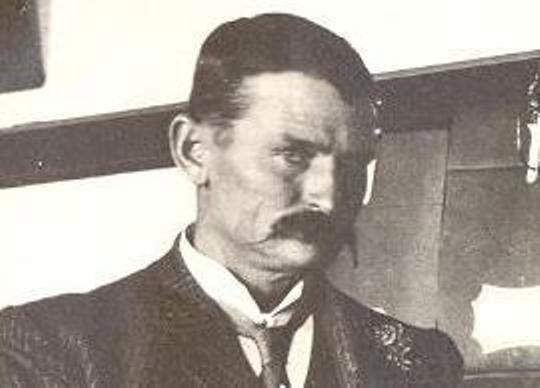
Sir Thomas Cullinan
Founding of the Premier Diamond Mining Company Ltd. on December 1, 1902, and exploratory mining soon afterwards
Thomas Cullinan founded The Premier Diamond Mining Company Ltd. on December 1, 1902, and soon afterwards began exploratory activities, such as surface prospecting and the sinking of exploratory pits. As a result of this initial exploratory studies, it was found that the kimberlite pipe consisted of a huge funnel-shaped volcanic chimney, which outcropped on the surface over a roughly pear-shaped area about 80 acres in extent. There was no limestone capping over the deposit as in the Kimberley mine, but a red clayey surface soil 5-6 feet thick, under which was a layer of around 30 feet of oxidized kimberlite, known as the "yellow ground," which gradually merged into an unoxidized "blue ground" like other African kimberlite pipes. The "blue ground" of the Premier Mine, was much more friable than that of the Kimberley mines, crumbling easily into smaller fragments, eliminating the need to spread out on the floors, and could be sent directly to the washing plant, saving a lot of time and expenses.
Actual production at the Premier Diamond Mines begin on April 24, 1903
After exploratory mining, actual production at the Premier Diamond Mines, began on April 24. 1903. The company began extensive open-pit mining, as in other mines that started operations earlier, such as the Kimberley, De Beers and Dutoitspan Mines. The diamond bearing earth was transferred from the open-pit, by an extensive rope-haulage system to a steam-driven processing plant, situated on a small elevation, at the edge of the open crater, and the slurry from the plant was discharged into the adjoining low-lying land. After one year of operation the mine that was already prosperous employed more than 2,000 people.
The Premier Diamond Mine sets the world record as the source of the largest gem-quality rough diamond ever discovered in 1905 - the 3,106-carat Cullinan diamond
During the first two years (1903-04) of the mine's operation, it produced four large rough diamonds over 300 carats each, two rough diamonds between 200-300 carats each, and sixteen rough diamonds between 100-200 carats each. However, the most significant of the discoveries that attracted international attention to the Premier Diamond Mines, came on January 25, 1905, when an extraordinarily large rough diamond, weighing a massive 3,106 carats, the largest gem-quality rough diamond ever discovered from any diamond mine in the world, was found by the mine manager Mr. Frederick Wells, while making his final rounds of inspection for the day, soon after closing hours. The rough diamond was named the "Cullinan diamond" in honor of the Chairman of the company, Sir Thomas Major Cullinan. The previous record for the largest gem-quality rough diamond ever discovered was held by the 995-carat "Excelsior diamond" discovered in 1893 at the Jagersfontein mine in Orange Free State, in South Africa. The "Excelsior diamond" that held the title for 12 years from 1893 to 1905, had wrested the coveted title from the 787-carat "Great Moghul Diamond" which had enjoyed the undisputed distinction for 243 years, since it's discovery in the Golconda mines of Southern India, in 1650. The "Cullinan" rough diamond has now held the title for 107 years (as at year 2012) and it is highly unlikely that any rival could appear, that could challenge the exalted position held by the Cullinan, in the near future. Soon after the discovery of the Cullinan rough diamond another large rough diamond weighing 334 carats was discovered in the Premier Diamond Mines in the middle of February 1905.
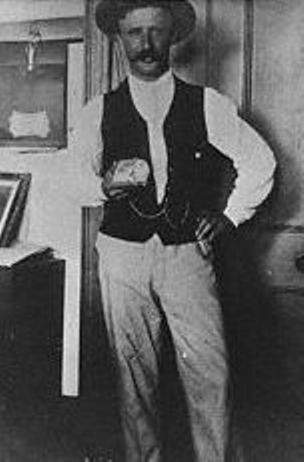
Cullinan rough diamond held by Mine Superintendent/Manager Frederick Wells

3106-carat Cullinan rough diamond, the largest gem-quality rough diamond ever discovered
List of largest gem-quality rough diamonds discovered in the world as at year 2009
Name |
Country of discovery | Year of discovery | Carat Weight | Color | Position |
| Cullinan | South Africa | 1905 | 3,106 | Colorless/White | 1 |
| Excelsior | South Africa | 1893 | 995 | Colorless /White | 2 |
| Star of Sierra Leone | Sierra Leone | 1972 | 969.80 | Colorless/White | 3 |
| Incomparable | Zaire | 1984 | 890 | Brownish-yellow | 4 |
| Great Mogul | India | 1650 | 787 | Colorless/White | 5 |
| Millennium Star | Zaire | 1990 | 777 | Colorless/White | 6 |
| Woyie River | Sierra Leone | 1945 | 770 | Colorless/White | 7 |
| Golden Jubilee | South Africa | 1985 | 755 | Yellowish-brown | 8 |
| President Vargas | Brazil | 1938 | 726.60 | Colorless/White | 9 |
| Jonker | South Africa | 1934 | 726 | Colorless/White | 10 |
| Jubilee-Reitz | South Africa | 1895 | 650.80 | Colorless/White | 11 |
| Unnamed | South Africa | 1984 | 620.14 | 12 | |
| Sefadu | Sierra Leone | 1970 | 620 | Colorless/White | 13 |
| Kimberley Octahedral | South Africa | 1964 | 616 | Yellow | 14 |
| Lesotho Promise | Lesotho | 2006 | 603 | Colorless/White | 15 |
| Lesotho Brown | Lesotho | 1967 | 601 | Brown | 16 |
| Centenary | South Africa | 1986 | 599 | Colorless/White | 17 |
| De Grisogono | Central Africa | 587 | Black | 18 | |
| Unnamed rough diamond from Petra-Cullinan -Premier Diamond mine | South Africa | 2009 | 507.55 | Colorless/White | 19 |
| Letseng Legacy | Lesotho | 2007 | 493 | Colorless/White | 20 |
| Light of Letseng | Lesotho | 2008 | 478 | Colorless/White | 21 |
| Jacob-Victoria | South Africa | 1884 | 457.50 | Colorless/White | 22 |
| Zale light of peace | Sierra Leone | 1969 | 435 | Colorless/white | 23 |
| De Beers | South Africa | 1888 | 428.50 | Yellow | 24 |
| Niarchos | South Africa | 1954 | 426.50 | Colorless/White | 25 |
The Cullinan diamond was gifted to King Edward VII of Great Britain by the Transvaal government, as a token of gratitude for granting Transvaal its own constitution
On an intiative taken by Louis Botha, premier of the Transvaal Colony, the Transvaal Assembly purchased the Cullinan rough diamond from Sir Thomas Cullinan for £150,000 and presented it to King Edward VII of Great Britian, as a token of gratitude for granting Transvaal its own constitution, and as a birthday gift on the occasion of his 66th birthday, which fell on November 9th, 1907.
Operations in the Premier Diamond Mine during the last 110 years can be conveniently divided into four periods
The Premier diamond mine that began operations in 1902, still continues to produce diamonds, and had been operational during the last 110 years, save for two interruptions during world war 1 from 1914 to 1916, and the great depression from 1932-1945. Hence, the operations of the mine during the last 110 years can be conveniently divided into four periods :-
1) The period from 1902 to 1914.
2) The period from 1916 to 1932.
3) The period from 1945 to 1979.
4) The period from 1979 to the present.
1) The period from 1902 to 1914
This is the period from the time the mine began its first operations in 1902 until the outbreak of World War I in 1914. The mine was operated as an open-pit mine under the management of the Premier (Transvaal) Diamond Mining Company headed by Sir Thomas Cullinan. The mine that had been hitherto functioning smoothly encountered serious difficulties in 1914, with the outbreak of industrial unrest and the retrenchment of 381 European employees for provoking such unrest. Soon after this the outbreak of World War I in Europe in August 1914, led to a serious decline in prices for diamonds, making the operation of the mine uneconomical. As a result operations at the mine were totally suspended.
Among the famous diamonds discovered during this period at the Premier diamond mines are the 3,106-carat Cullinan rough diamond, discovered in January 1905, the largest ever gem-quality rough diamond discovered in the world and the 102-carat Blue Heart rough diamond disovered in November 1908. Apart from top quality (D-F color) colorless diamonds, the Premier Diamond Mines also became a consisent source of high-quality blue diamonds in the world, in the 20th-century, a position previously occupied by the Kollur diamond mines of Golconda in Southeastern India, prior to the 18th-century.

Extensive open-pit mining at the Premier Diamond Mines before 1945
Above photograph circa 1918
2) The period from 1916 to 1932
The Premier Diamond Mine resumed production on January 16, 1916. In 1917, De Beers Consolidated Mines that controlled several mines in the Kimberley region of Northern Cape Province of South Africa, acquired a controlling interest in the Premier Diamond Mine. Operations at the mine were again affected during the outbreak of the 1918 worldwide flu pandemic, known as Spanish Flu. Almost every family in the Cullinan village were affected and lost at least one member of the family during the period of this deadly epidemic, that killed 50-100 million people worldwide. Production resumed normal levels at the end of the epidemic in 1921. Production was again disrupted when the Great Depression began in America in 1929 and spread across the world, with fall in prices of diamonds that made the continued operation of the mines highly uneconomical. Production was again suspended in 1932 and not resumed until 13 years later, at the end of World War II in 1945, the longest period the mines remained inopertive during its history.
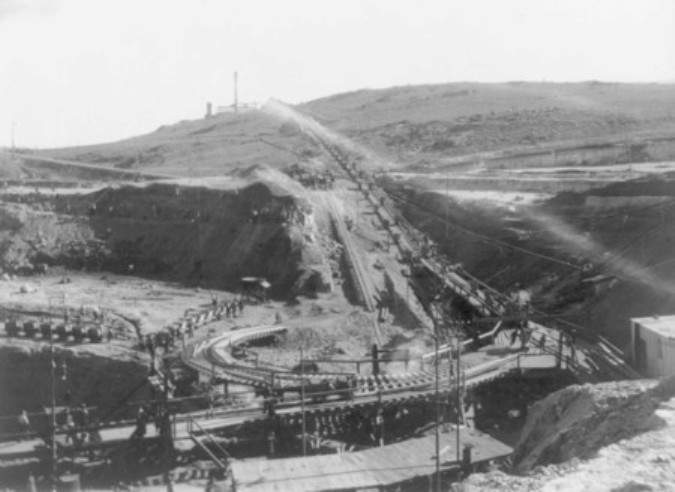
Photograph of Premier Diamond Mine, Transvaal, South Africa, taken between 1902 and 1923
3) The period from 1945 to 1979.
During the 13 years the open-pit mine remained idle, large quantities of water had collected in the pit. Hence to resume production at the end of the war, the first major task was to pump out the large volume of water that had colected in the pit. Having achieved this production resumed in the mine. However, the mine which hitherto had operated as an open-pit mine, now began underground mining operations. The mine was now totally owned by De Beers Consolidated Mines, and since operations resumed in 1945 some exceptional diamonds had been recovered from the mine, such as the 426.5-carat Niarchos Diamond in 1954. Some of the other famous diamonds discovered from the mines, include the 240.80-carat Taylor/Burton rough diamond, discovered in 1966 and the 353.9-carat Premier Rose rough diamond discovered in 1978. Underground mining activity in the Premier Diamond Mines had now reached around 400 meters below the surface.
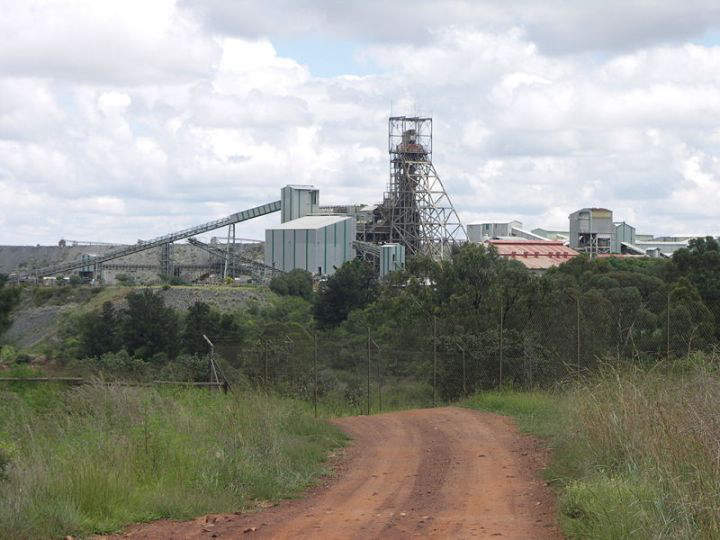
Headframe of the Cullinan Diamond Mine - Photograph taken in February 2006
4) The period from 1979 to the present
In 1979 production at the Premier Diamond Mines was given an added boost with the opening of the mine below the "Gabro Sill", a 70 meter geologic intrusion of barren rock which cuts right through the pipe some 400 meters below the surface. Production from this new source extended the life of the mine, several decades and the mine is still in production.
Some of the famous diamonds produced after 1979, include the 599-carat Centenary rough diamond discovered in July 1986, but unveiled to the world as a 273.85-carat, D-color, internally flawless diamond with a modified heart-shape, on March 11, 1988, to mark the centenary of the De Beers Consolidated Mines Ltd; the 755-carat Golden Jubilee rough diamond, discovered in 1985 and transformed by master diamond cutter Gabi Tolkowsky to a 545.67-carat, unique "fire rose cushion-cut," fancy yellow-brown diamond, that was purchased by the Government of Thailand and gifted to the King of Thailand on the occasion of the golden jubilee of his coronation in 1997; and the 11 exceptionally rare blue diamonds of the De Beers Millennium Diamond Collection displayed at the London's Millennium Dome, and ranging in size from 5.16 carats to 27.64 carats. The largest of these blue diamonds is the 27.64-carat fancy vivid blue "Heart of Eternity" diamond. Most of these blue diamonds were discovered over a decade in the 1990s. In the list of 47 famous blue diamonds given above almost 35 diamonds originated in the Premier Diamond Mines.
Another, significant discovery at the Premium Diamond Mines now known as the Petra Diamond Mines is the 507.55-carat white/colorless diamond, the "Cullinan Heritage" discovered in 2009, the 19th largest rough diamond ever discovered , and sold uncut for a record US$ 35.3 million to a Hong Kong-based private jewelry retailer "Chow Tai Food Jewelry," the highest price ever paid for a rough diamond. The previous record for the highest price paid for a rough diamond was held by Gem Diamond Company's Leseli La letseng, bought by Laurence Graff in December 2008 for US$ 18.4 million.

John Dippenaar, Petra CEO holding the large 507.55-carat rough diamond
Premier Diamond Mine is renamed as Cullinan Diamond Mine in November 2003
In November 2003, De Beers Consolidated Mines Ltd. renamed the Premier Diamond Mines as the Cullinan Diamond Mines on the occasion of the centenary of the diamond mine, to perpetuate not only the memory of the founder of the diamond mine, Sir Thomas Cullinan but also the discovery in 1905 of the largest ever gem-quality rough diamond in the world, the 3,106-carat Cullinan rough diamond.
Cullinan Diamond Mine is acquired by Petra Diamonds in July 2008
In July 2008, Petra Diamonds led a consortium that acquired the Cullinan Diamond Mine from De Beers Consolidated Mines Ltd. for a some of 1 billion South African Rands, and the name of the diamond mine became Petra Diamond Mine. Petra Diamonds had the expertise to turn around unprofitable South African diamond mines acquired from De Beers into profitable ventures, such as the Koffiefontein Diamond Mine purchased in December 2006, which was made a profitable venture by year 2008. Some of the famous diamonds produced after Petra Diamonds acquired the mines, are the 507.55-carat white/colorless rough diamond known as the "Cullinan Heritage" shown above and the 7.03-carat Petra Blue/Star of Josephine blue diamond that sold for a record US$ 9.5 million at the Sotheby's Geneva auction in May 2009.
You are welcome to discuss this post/related topics with Dr Shihaan and other experts from around the world in our FORUMS (forums.internetstones.com)
Related :-
External Links :-
1) The Blue Empress Diamond - https://largediamonds.steinmetzdiamonds.com
References :-
1) The Blue Empress Diamond - www.largediamonds.steinmetzdiamonds.com
2) Blue Empress Diamond - www.steinmetzdiamonds.com
3) The Blue Empress - www.famousdiamonds.tripod.com
4) Important Diamonds Owned by Harry Winsron- Harry Winston - From Wikipedia,the free encyclopedia.
5) List of 20 referred blue diamonds - Info Diamond, www.info-diamond.com
6) An Extraordinary Colored Diamond Ring - Christies Geneva Sale 1363/Lot 393. https://www.christies.com/LotFinder/lot_details.aspx?intObjectID=5076879
7) Famous Diamonds - www.capetowndiamondmuseum.org
8) South African Diamond History - www.capetowndiamondmuseum.org
9) Petra Diamonds - From Wikipedia, the free encyclopedia.
Powered by Ultra Secure
Amazon (USA) Cloud Network

Founder Internet Stones.COM
Register in our Forums
| Featured In
|
|
|
|
|
|
|
|



















